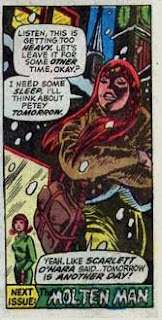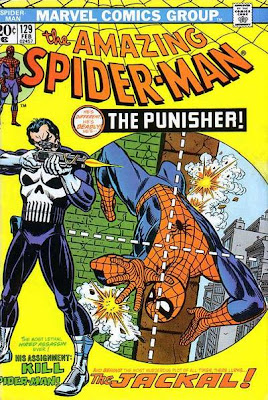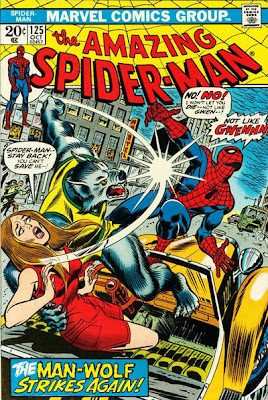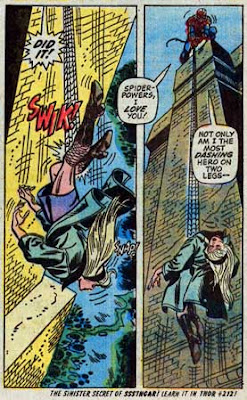"The Master Plan Of The Molten Man!"
Words by Gerry Conway.
Art by John Romita/Paul Reinman/Tony Mortellaro.
Lettering by Artie Simek.
Colours by P Goldberg.
There are times when you just wish Spider-Man would shut up and think before he acts. This issue's a case in point as Gerry Conway continues his seeming quest to revive every old foe our hero has ever met. This time round we get the Molten Man.
And what a welcome return it is. I have to confess that, in the past, Moltie's never really lit my candle but, here, he's terrific, a man driven mad by his affliction, more interested in finding a cure for his plight than causing trouble but forced by his very nature to be a menace. You can't help feeling that, at a time like this Spidey should be more interested in helping Mark Raxton than in fighting him but, like I say, he doesn't always seem to believe in thinking before he acts.
And where does that policy leave him?
It leaves him lying at death's door as the tale draws to a close.
Will he learn anything from this?
Of course he won't.
A welcome return too for Liz Allen/Allan. You could hardly claim she's been missed in all these years but it's oddly pleasing to see her back again. I was going to knock Conway for having Peter say that Mary Jane and Liz never got on in the past, on the grounds that, as far as I was aware, they'd never even met. How wrong I was. There they are, in issue #25, having a pointed, if brief, encounter. Clearly Conway had a better memory for these things than I have.
Really, my only quibble with this tale is the heat issue. Spider-man seems able to hit the 300-degree Molten Man with impunity and to be hit with impunity. Peter Parker having a few blisters or the odd bit of heat rash after their encounter might at least have been some acknowledgement of the difficulties involved in battling such a foe.










































.JPG)














